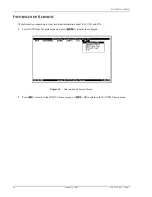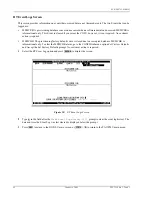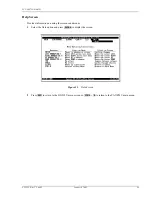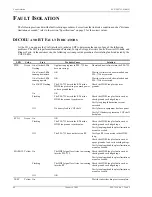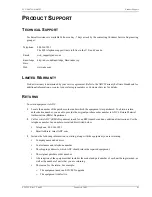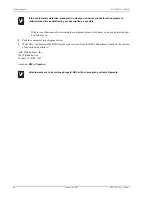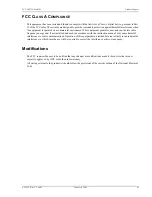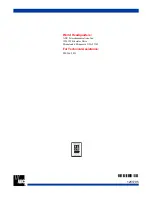
Fault Isolation
SCP-PLL735-010-03H
62
January 6, 2003
PLL-735 Lists 1, 2 and 3
S
UBSCRIBER
R
EPORTED
F
AULTS
At the CO, you can use the Craft interface to initiate a SDT to determine the cause of any of the following
problems. The SDT test performs Hazardous Potential, Foreign Voltage, Resistive Faults, Receiver Off-hook, and
Ringers Tests. At the customer site, the following sections provide procedures for isolating faults, based on
subscriber reports.
Indicator
Probable Cause
Solution
No dialtone,
cannot dial
Short-circuit or open-circuit
1
At the CO using the Craft screen, select TEST menu option, and view the test
results. The tests run are for Hazardous Potential, Foreign Voltage, Resistive
Fault
,
and CPE Termination.
2
At the RT, lift the subscriber pair at the RT by opening the RJ-11 connector
on the Integrated Protector Module. If dialtone is present at the RT and calls
can be placed, the fault is in the subscriber side. Check for shorts or opens
towards the subscriber or on the customer premise.
3
If dialtone is not present with the RJ-11 test connector lifted, lift the jumper in
the CO between the CO switch and the COTS. If dialtone is present at the
switch, replace the COLU.
4
If after replacing the COLU the dialtone is still not present, the fault is in the
RT. Replace the RT.
Phone does
not ring
High-resistance short on
subscriber drop (REN load
exceeded, see Specifications).
1
At the CO, using the Craft interface, go to the COLU Main Screen to verify
the correct operation of the COLU. Check the front panel LEDS for flashing
while line is ringing. If you cannot view the COLU Main Screen, a
communication error exists indicating a faulty COLU. Remove and re-insert
the COLU.
2
Go to the Test option, and select the desired circuit to test.
3
View the SDT results. Refer to the Test Submenu section for specific results.
4
At the RTs, check for ringing with the RJ-11 test jack open. If ringing is not
present, check for ringing on another line terminated on the same RT. If
ringing is present on other lines, check for high-resistance shorts on the
subscriber drop. If no high resistance shorts, replace the RTs.
5
If ringing is not present on another circuit terminated on the RT, lift the jumper
between the CO switch and the COTS. If ringing is present, replace the
COLU. If ringing is not present, the fault is in the switch.
Phone does
not stop
ringing
Faulty subscriber station
instrument or loop length too
long.
1
If phone stops ringing when using a butt-in set at the subscriber location, the
subscriber's station internal resistance is too high. Replace phone.
2
If phone does not stop ringing when using a butt-in set at the subscriber
location, one or both of these conditions exist:
•
loop length is too long (refer to Specification table)
•
or the RT is faulty.
Can not hear,
cannot be
heard
Subscriber problem
1
Open the RJ-11 test jack at the RT. If audible level is acceptable, the problem
is with subscriber equipment.
2
If audible level is too low at the RT with the RJ-11 test jack lifted, lift the
jumper in the CO between the CO switch and the COTS.
•
If audible level is acceptable, replace the COLU or RT
•
otherwise, the problem is in the CO switch.







